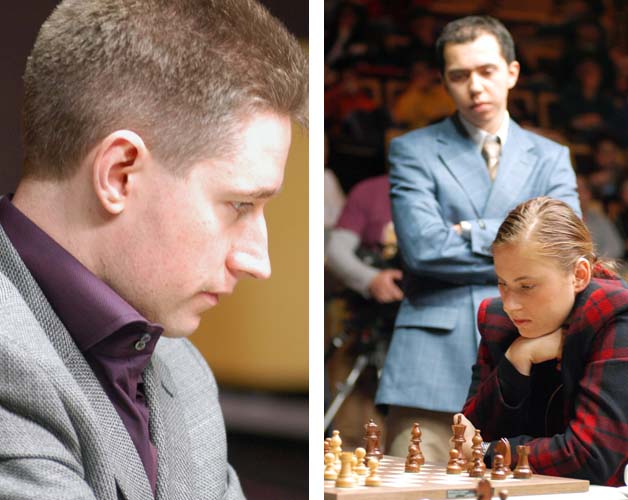plang: Four months earlier at Sofia Adams had played 6 g3 against Polgar but was held to a draw despite a favorable middle game position. At the 2001 European Team Championship at Leon Lutz had played 10..Bxc3 against Adams and White had gone on to win. 12 Bf3 had been played in an obscure game in the 1962 British Championship; 12 Bh5+ was new. 9..Bb4 and 14..Bxc3 left Black weak on the dark squares; 14..Bc5 would have been better (14..Ne7? 15 Nxb5).Gershon and Nor after 17..Nd5:
"This position is sure to give a classical player some severe cognitive dissonance. It is so hard to admit, that such a Paulsen-like position, with good pieces, gladly located on light squares, such a monstrous knight in the centre (which cannot be driven away without weakening White's position) against a bishop that, at least according to Capablanca's definition, would not be thought of as the "good" one - is in fact a bad position. But this is the situation, and for the following reasons:
1. Black has no long term plan
2. Black's dark squares are weak
3. Black's king is unsafe.
And it is not about castling, but rather the lack of an appropriate safe spot on the board where it will not be hunted. These three points prove to outweigh the abstract measures of good, bad and ugly bishops."
Black would have had a very unpleasant defense after 18..Nxb4 19 cxb. Adams didn't like 20..Kf7 recommending 20..Qc4 instead. Polgar pointed out that 29 g4! would have given White a decisive attack.; instead Adams 29 Qg3? gave Polgar time to organize some counterplay.
Gershon after 35 Kg1:
"Adams play is a study in prophylaxis. Whenever he needs to jump into hot water (and he did), and probably decide the game - he does not do so, but whenever the opponent creates some threats, the Briton enters his favorite state: depriving the opponent of any chance with great skill. It is hard to win this way, but even harder to lose."
In his analysis after the game Adams agreed with other commentators that he had an edge at the time he agreed to a draw though, with best play, the game would likely have ended in a draw.
For the second consecutive game Polgar played the opening poorly but, in this case, Adams did not make the most of his attacking chances.






